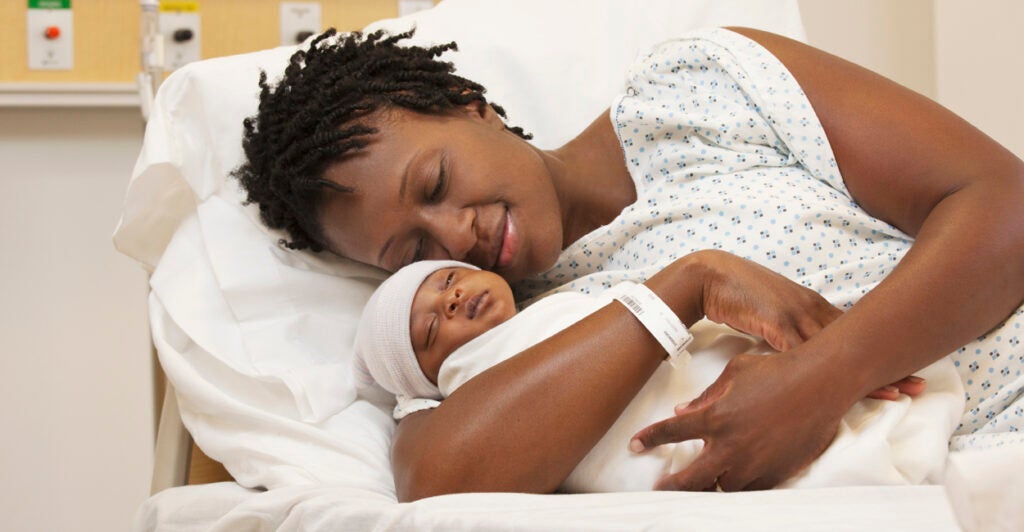Stories of resilience and hope emerge even in the darkest times.
In its 1973 decision in Roe v. Wade, the Supreme Court created and imposed a policy for killing babies in the womb, one of the most extreme in the world, which the American people never chose for themselves.
A large and consistent majority of Americans, however, has not been duped by 50 years of unrelenting propaganda, misdirection, and spin. The latest polling adds evidence that ought to encourage and guide the pro-life movement should the Supreme Court correct its error and overrule Roe with its expected decision in Dobbs v. Jackson Women’s Health Organization.
Abortion advocates, aided and abetted by the mainstream media, go to great lengths to keep us from believing our eyes or using our common sense. The issue, they say, is not this particular choice, but “choice” itself, even though anyone who has ordered from a menu or registered for college classes is pro-choice.
More recently, the propaganda is that killing babies is health care; activists even use phrases such as “abortion care,” as if abortion is a thing to be protected and cared for.
A photo of members of the House’s Pro-Choice Caucus features signs that say “Liberate Abortion” and “Abortion Is Essential.”
Even the Supreme Court didn’t go that far.
“The pregnant woman cannot be isolated in her privacy,” wrote Justice Harry Blackmun in his majority opinion in Roe, because abortion eliminates “children in the womb.”
The seven justices in the Roe majority, however, apparently forgot that each of them had been just that. Is it any wonder that the pro-abortion propaganda machine today will do anything to deny that “prenatal life,” as the high court put it, exists at all?
In Roe v. Wade, for example, the Supreme Court defined “viability” as the “point at which the fetus … is potentially able to live outside the mother’s womb, albeit with artificial aid.”
The proposed Women’s Health Protection Act, supposedly a legislative version of Roe, defines viability as “the point in a pregnancy at which … there is a reasonable likelihood of fetal survival outside the uterus with or without artificial support.”
A fetus is a real, separate being, and the mother’s womb is where each of us once resided. Fetal survival, in contrast, is an abstract idea and a uterus is just another organ.
A new poll, released this week by Americans United for Life, further demonstrates the widening gulf between abortion advocates and the American people.
Nearly 90% of those surveyed, for example, say that unborn children become “persons” before birth, the largest share saying that this occurs at conception. An equal portion say that unborn children have a right to be protected from violence, and 80% say they have a right to be born.
Abortion extremists who deny that each of us was alive and human before we were born are practically talking to themselves.
At the same time, the Americans United for Life poll suggests where pro-abortion propaganda has sown some confusion that needs attention. As noted, 80% say that an unborn child has a right to be born. Yet only 51% say than an abortion “ends the life of a human before birth” and another 28% say that “it depends.”
This actually should be the easiest question to answer. Human reproduction does not produce puppies or guppies, it produces humans. And how did each of us develop from an embryo to an infant—or from an adolescent to an adult, for that matter—if we were not alive?
Abortion not only ends the life of a human before birth, but that is exactly what it is supposed to do. If unborn children have a right to be born, nothing denies that right more than abortion.
The Supreme Court is poised to lift the barrier it constructed in 1973 by overruling Roe v. Wade. The gag rule it imposed on tens of millions of pro-life Americans will be rescinded so that their voice finally can be heard.
Have an opinion about this article? To sound off, please email letters@DailySignal.com and we’ll consider publishing your edited remarks in our regular “We Hear You” feature. Remember to include the url or headline of the article plus your name and town and/or state.
